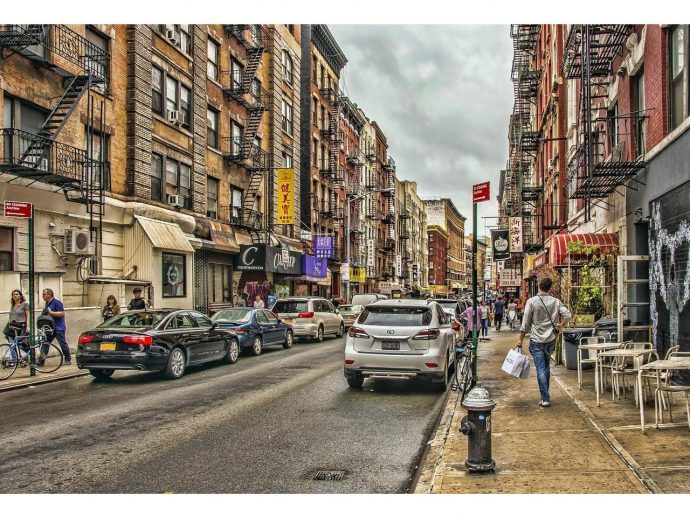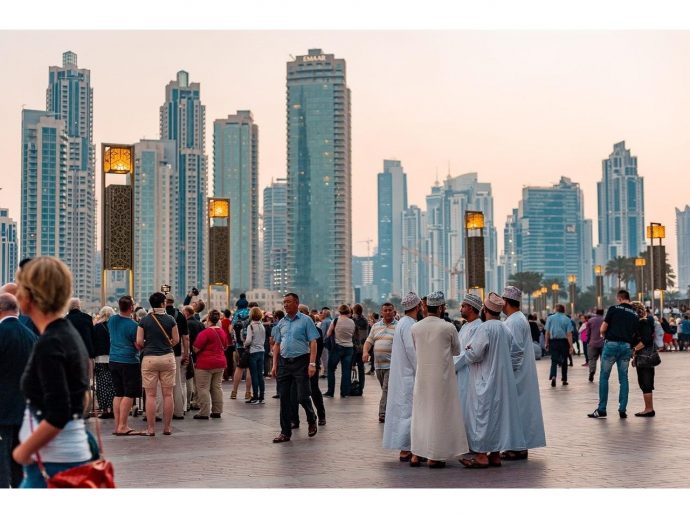Categories more
- Adventures (16)
- Arts / Collectables (14)
- Automotive (36)
- Aviation (10)
- Bath, Body, & Health (73)
- Children (6)
- Cigars / Spirits (30)
- Cuisine (16)
- Design/Architecture (17)
- Electronics (12)
- Entertainment (4)
- Event Planning (3)
- Fashion (42)
- Finance (8)
- Gifts / Misc (6)
- Home Decor (44)
- Jewelry (39)
- Pets (3)
- Philanthropy (1)
- Real Estate (12)
- Services (21)
- Sports / Golf (14)
- Vacation / Travel (60)
- Watches / Pens (14)
- Wines / Vines (24)
- Yachting / Boating (15)
Cultural Overlap Zones: Cities Where Worlds Quietly Collide
Published
07/07/2025There is something magical about walking through a city where languages blend, where scents from three continents mix in a single street, and where identities don’t just remain the same but evolve together. For those seeking deeper connections, whether in friendship, travel, or love, these overlap zones offer something unique. Think of how many people search for single women to date online, not just for romance but for deeper cross-cultural understanding.
The relationships that emerge from these online connections often flourish in places where cultural layers already coexist. In these cities, a Turkish café owner might form a connection with a Colombian software engineer, and shared spaces help foster mutual understanding. These urban areas serve as meeting points where global migration, economic exchanges, digital nomads, and ancient trade routes converge — not for spectacle but for survival and reinvention.
A Blend of Traditions in New York City
New York doesn’t blend cultures — it throws them in a room and lets them shout over each other. And somehow, it works. In Queens, a single subway line cuts through communities speaking Greek, Bengali, Spanish, Mandarin, and Arabic. In the Bronx, Dominican beats mix with Ghanaian highlife. In Brooklyn, bagels and bok choy live in the same grocery aisle.
This is a city that’s always been a portal. First for immigrants, now for creatives, exiles, and people reinventing themselves. It doesn’t ask where you’re from so much as what you’re doing next. That urgency makes the overlap electric. You don’t just find culture here — you collide with it at every bodega, food truck, and block party.
New York’s overlap zones are dynamic. Salsa evolves into reggaeton, which then blends with drill. Street English transforms into slang that sets global trends. The city doesn’t just accept difference — it turns it into trends, business, and stories.
Tokyo: Precision Meets Plurality
At first glance, Tokyo might not seem like a cultural overlap zone. Its trains run on time to the second, the etiquette is refined to ritual, and the streets pulse with uniformity. But beneath that precision lies a quietly layered world where global influences are absorbed, remixed, and made unmistakably Japanese.
Walk through neighborhoods like Shin-Okubo (often dubbed “Koreatown”), and you’ll find young Japanese teens singing along to K-pop, sipping banana milk from Seoul, and learning Hangul on weekends. Venture into Nakameguro, and the minimalist cafés serve Scandinavian cardamom buns alongside Kyoto-style matcha. Tokyo doesn’t resist outside cultures — it curates them.
Even within Japanese identity itself, there’s multiplicity. From Okinawan heritage in the south to Ainu traditions in the north, Tokyo becomes the meeting point where these narratives converge and quietly evolve. And in the shadow of its neon skyline, expats, returnees, digital nomads, and third-culture kids build communities where belonging is not about origin but shared presence.
London as the Global Village
London is a city where past and present seamlessly blend and showcase the quiet collision of cultures. As a former colonial power, the United Kingdom has long been home to waves of immigrants from its former colonies, who brought with them traditions, customs, and worldviews. This cultural exchange has shaped London into a dynamic, multicultural city where diversity is embedded in everyday life.
Neighborhoods like Brick Lane and Southall provide a snapshot of London’s diversity, with shops, restaurants, and businesses that reflect the heritage of their communities. From the lively markets of Brixton to the refined tea culture of Mayfair, it offers a blend of old and new, where multiple worlds collide and coexist. This fusion enriches the city’s identity.
The Elegance of Parisian Diversity
Paris is known as the city of light, love, and layered identity. Beneath its romantic facades and polished boulevards, however, is a place marked by friction and constant reinvention. From Algerian couscous in Belleville to Vietnamese “bánh mì” in the 13th arrondissement, the French capital has always fed off its former colonies — and then quietly absorbed them.
The overlap here is historical and emotional. For many second- and third-generation immigrants, to be French is to constantly translate — between a legal identity and a cultural one. In the outskirts, French hip-hop, Maghrebi slang, and Senegalese beats fuse into new urban dialects. It’s Paris, but refracted through diaspora eyes.
The city doesn’t always make space willingly, but the result is undeniable: cultural collision is stitched into the fabric of the city, from its food to its fashion to its protest culture. And yet, every identity, however conflicted, can still pause at a café, share a cigarette, and argue about philosophy. That too is Paris.
Dubai and the Essence of Change
Dubai is often seen through its extremes — ultramodern towers, luxury malls, desert heat — but its real identity lies in what happens between the lines. With nearly 90% of its population made up of expats, it doesn’t just host cultures — it functions because of them. South Asian construction workers, Filipino nurses, British consultants, Kenyan hotel staff, and Lebanese entrepreneurs all shape its rhythm.
What emerges isn’t a melting pot in the traditional sense. It’s more like a mosaic: each group keeps pieces of their culture intact while adjusting just enough to move together. The city’s cafés might serve “karak chai” next to date milkshakes. In one metro car, you’ll hear Tagalog, Arabic, English, and Malayalam, which creates a natural mix of languages.
Dubai’s overlap is logistical as much as it is cultural. The city has learned to choreograph differences — to make it efficient and, surprisingly, intimate. Friday brunches become cultural sampling sessions. Prayer rooms exist in shopping centers. Even though residents may only stay for a few years, they leave with a slightly changed sense of self. Their time in Dubai influences their perspective and identity in subtle ways.
















